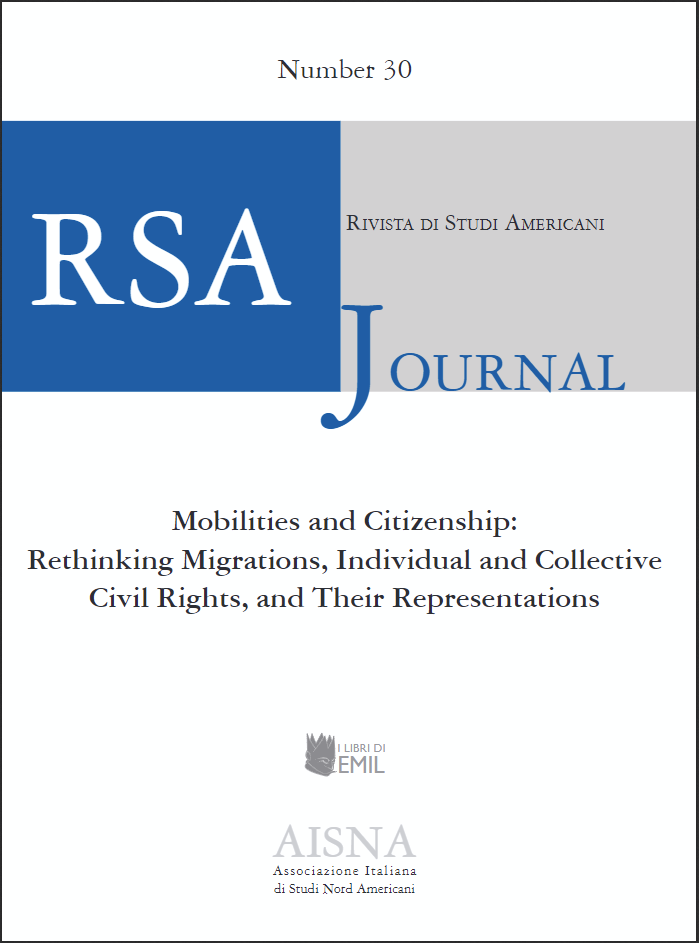The “Men” of the Crowd
Mobs, Armies and Public Space in Classic American Literature
DOI:
https://doi.org/10.13135/1592-4467/8521Parole chiave:
crowd, space, classic American literatureAbstract
The meaning of crowds in US culture has always been controversial, and the disruptive potential they might have has generally been considered dangerous. Historically, the few large manifestations of this latent power and its impact on the public space trace back to the revolutionary years: in 1776, a crowd of New Yorkers tore down the statue of George III. They were not only erasing a symbol of oppression, but also modifying the shape of the city, because the relationship between people and the space they inhabit is not unequivocal: the agency of mobs determines tangible effects on space, defining public space in many ways through its massive occupation. The article investigates the military nature of crowds portrayed in classic American literature, by analyzing crowd scenes in Washington Irving’s “Rip Van Winkle” (1819), Nathaniel Hawthorne’s “My Kinsman, Major Molineaux” (1832), Edgar Allan Poe’s “The Man of the Crowd” (1840), and Herman Melville’s Israel Potter (1855).
##submission.downloads##
Pubblicato
Fascicolo
Sezione
Licenza
Avviso sul Copyright
RSAJournal applica una licenza CC BY-NC-ND a tutti i suoi contributi. Questa licenza consente agli utenti di copiare e distribuire il materiale in qualsiasi supporto o formato solo in forma non adattata, per scopi non commerciali e a condizione che venga esplicitato/a l'autore/autrice dell'opera. CC BY-NC-ND include i seguenti elementi:
- BY: L'autore deve essere riconosciuto come tale.
- NC: Sono consentiti solo utilizzi non commerciali dell'opera.
- ND: Non sono consentite opere derivate o adattamenti dell'opera.
Gli autori che pubblicano con questa rivista accettano i seguenti termini:
- Gli autori conservano il copyright e tutti i diritti di pubblicazione per i loro contributi alla rivista.
- Gli autori concedono alla rivista il diritto di prima pubblicazione in base alla licenza internazionale Creative Commons Attribution-NonCommercial-NoDerivatives 4.0, che consente ad altri di condividere l'opera non modificata per scopi non commerciali a condizione che venga esplicitato/a l'autore/autrice dell'opera e la sede di pubblicazione iniziale (questa rivista).
- Gli autori sono in grado di stipulare accordi contrattuali separati e aggiuntivi per la distribuzione non esclusiva della versione pubblicata dalla rivista (ad esempio, per inserirla in una repository istituzionale o pubblicarla in un libro), con l'indicazione che il contributo è stato precedentemente pubblicato in RSAJournal.




